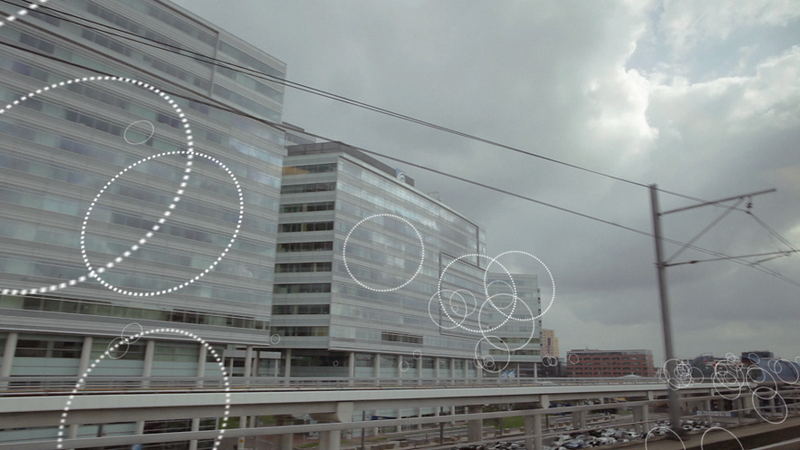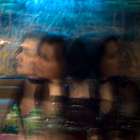Looking back at Improving Reality
Posted Sept. 12, 2013 by Maja KuzmanovićLast week Nik and I travelled to Brighton, UK for Improving Reality, a conference exploring the question: "How are artists, technologists and writers subverting our notion of reality?" This year's focus was on the systems and infrastructures that shape our world, as well as re-imagining realities of the near and far future.
The conference was curated and hosted by our dear friend Honor Harger, artistic director of Lighthouse. It was a great pleasure to participate in an event designed by Honor, who is uniquely able to pull quite distinct topics and people together into a coherent, simultaneously inspiring and challenging whole. For both Nik and me the conference was marked by strong mood swings, oscillating between bubbling optimism and detatched pessimism – each extreme fuelled by the presentations of some very eloquent speakers.
The day was filled with thought-provoking concepts, projects and critiques of the status quo. As is often the case in these settings, there was so much to talk about but unfortunately not enough time (or energy) to speak to everyone. We hope to continue these conversations about various types of futurism and fiction – as ways to smelt, bend, crack or otherwise actively participate in different realities – at FoAM, Lighthouse or wherever else our paths might cross.
 http://www.lighthouse.org.uk/programme/immaterials
http://www.lighthouse.org.uk/programme/immaterials
Keller Easterling talked about infrastructure space – the operating systems that shape cities, where buildings become active forms rather than static objects. She talked about free zones, originally pirate enclaves or bland visions of Capital that have now grown to swallow entire cities (such as Singapore, Dubai, or Astana in its "Paleo-Ghengis contest with Dubai") and contrasted them with village protocols, where highways are often less important than broadband. She suggested that rapidly developing African cities could become a new contagion of spatial software. Finally she wondered how we could hack infrastructure space, subtracting rather than increasing urban development, introducing contagion into the monocultural model of suburban blueprints. She suggested that we need an alternative "extrastatecraft" that would be discrepant, fictional and sly.
http://flickr.com/photos/cssmith/9689904941/in/set-72157635420516658
Most presentations probed the blurry edges between reality and fiction. Frank Swain talked about maps and the links between maps, infrastructure, conflict and fiction. As examples of how we change reality to suit our maps he showed the Koreshan system, invasion maps, or hidden places on Google maps. Tom Armitage briefly introduced Literary Operator, his speculative microfiction project with Jeff Noon. Alexandra Daisy Ginsberg argued that design should be used to seek out better questions, rather than providing "solutions" to the wrong problems, particularly in the context of synthetic biology. She sees the role of fiction as initiator of discussions; for example, can we use use living colour (E.chromi) to detect digestive problems? Can we make cheese from toe cheese? Or can we move from photosynthesis to electrosynthesis for Mars missions? Tobias Revell presented some of his design fiction projects including the Mercenary Cubiclists, and discussed the creation of alter/post-Occupy realities such as the wireless metropolitan networks in Athens and Barcelona, which move occupation into technological territory.
Farida Vis talked about her work with "big data" and the phenomenon of social networks like Facebook embracing algorithms that behave similarly to annoying toddlers, asking the same questions over and over again while at the same time gathering a large amount of information about us for opaque ends. Georgina Voss looked the at parallels between "choose your own adventure" fantasy novels and myths surrounding entrepreneurship policies and financing (beware MUPPETS are not Gazelles). Paula Le Dieu focused on the importance creating open platforms where people can tell their own stories. Justin Pickard talked about the question of appropriate technology, or fluid technology able to adapt and change depending on its use. He asked us to spot the differences between initiatives such as Internet.org and info ladies in Bangladesh, and led us through a great collection of "appropriate technology" examples, from brck.com to the Global Village Construction set, Radi-aid and Wikihouse via the AK-47 and Machette.
http://flickr.com/photos/cssmith/9693169246/in/set-72157635420516658
One of many hilights of the day was Paul Graham Raven's inspiring talk about Infrastructure Fiction, which he describes as reflexive macroengineering, or a form of design fiction, a way to construct conceptual models about the systems beneath and below "seamless" reality that are usually seen as "Someone Else's Problem". A piece of infrastructure fiction could start with "beneath the street, the conduit…" and explore the edges between (what we consider) technology and infrastructure. As an example he talked about the power drill and asked us where the infrastructure stops and technology begins. In his terms, the only "technology" in a drill is its drill bit. Everything else is an interface, or in one way or the other part of more or less invisible infrastructure. He encouraged us to "Think about the box" rather than just outside of it and particularly to focus on what is often the most invisible part of infrastructure: the people. Hear, hear!
- You can read about FoAM's take on improving reality here: http://lib.fo.am/improving_realities
- Improving Reality programme: http://www.lighthouse.org.uk/programme/improving-reality-2013
- Some notes taken during the conference: http://lib.fo.am/improving_reality_2013
Created: 15 Jul 2021 / Updated: 15 Jul 2021

